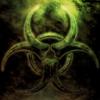The standard lighting used in OpenGL fixed-function (and I guess in D3D) basically boils down to:
color = material.emissive + material.ambient * light.ambient
+ material.diffuse * diffuseValue + material.specular * specularValueWhere diffuseValue and specularValue are calculated values.
But when you add a texture-map, how is this traditionally integrated i.e. how does it affect the emissive, ambient, diffuse and specular terms?
I assume emissive should not be modified. Should we replace material.ambient with material.ambient * textureValue and material.diffuse with material.diffuse * textureValue? Should specular BE affected by the texture map or not?
I'm aware there's probably a million valid ways it CAN be done. I'm mainly asking how the standard fixed-function pipeline does it.







